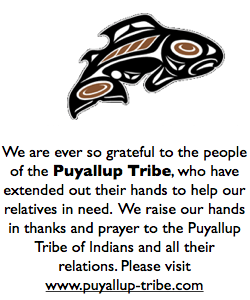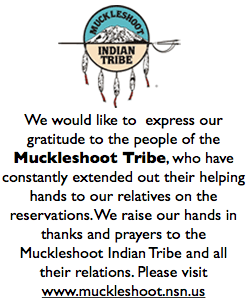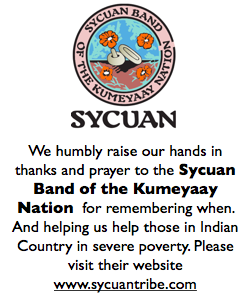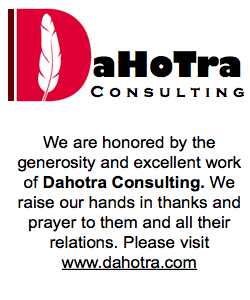GOVERNMENT ISSUED “INDIAN CHECKS”?
MOST OFTEN ASKED QUESTION IS:
DON’T “NATIVES AMERICANS” GET A GOVERNMENT CHECK FOR BEING INDIAN?
THE ANSWER IS ~ NO….
No enrolled tribal member has ever or is currently receiving any payments from the government, unless the government has collected funds on their Tribe or Nations behalf. In those instances they are not giving us their funds, but returning OURS. This could be compared to a minor child receiving payment for an acting/modeling job or other contract. The child, being a minor, does not receive the check directly. Instead, the check is allocated to the parents who then returns the funds to the child. The parent receives the funds on behalf of the child. In the U.S. Tribal relationship this may occur in the form of mineral rights, water rights, land royalties etc. The funds/payments for these rights or royalties are collected by the U.S. Government, which in turn distributes the funds to the Tribe or Nation who maintained the rights to the resources of the land.
“Truth be told, enrolled Tribal members do not receive these types of royalties as individuals, the funds are distributed to the Tribes/Nations who’s Tribal Councils determine how these funds will be distributed. Some enrolled tribal members do receive per-capita payments. These payments are no different than stock holders receiving dividends from their stocks. When tribal businesses (casino, timber, etc.) do well, per capita payments go up. When tribal businesses do poor, per-capita payments go down. Again, less than 5% of tribes distribute per-capita payments. That leaves 95% of American Indians who do not get any type of payment from the federal government or tribal government. The rumor that we receive money is perpetuated by people who just don’t know any better. Other rumors that I’d like to set straight are that yes, we pay taxes and no, we do not go to college for free.”
Anonymous Enrolled Tribal Member
Statement Endorsed by Chief Arvol Lookinghorse
More Info: www.bia.gov/FAQs/index.htm
www.bia.gov/WhoWeAre/BIA/ILCA/FAQ/index.htm#tophttp://www.bia.gov/FAQs/index.htm
_____________________________________________
THE TEN LARGEST RESERVATIONS WITH FAMILIES LIVING IN EXTREME POVERTY.
Navajo:
Nearly half of the families on the reservation (47%) live in poverty with 15% in extreme poverty
Uintah and Ouray:
More than half of the families on the reservation (54%) live in poverty with 4% in extreme poverty.
Tohono O’odham:
The poverty rate is about 44% with 21% of all households living in extreme poverty
Cheyenne River:
Two out of five of the reservation households (42%) live in poverty and 15% are in extreme poverty.
Standing Rock:
Of the families living on the reservation, 41% live in poverty with 17% living in extreme poverty.
Crow Agency:
About one-third of the families on the reservation (32%) live in poverty with 10% living in extreme poverty.
Wind River:
The poverty rate on the Wind River Reservation is low compared to many other reservations: 23% live in poverty with 13% in extreme poverty.
Pine Ridge:
More than half of the families on the reservation (53%) live in poverty with 21% living in extreme poverty.
Fort Peck:
About 39% of the Fort Peck residents live in poverty with 10% living in extreme poverty.
San Carlos Apache:
More than half of the families on the reservation (53%) live in poverty, with 25% living in extreme poverty.
http://www.dailykos.com/story/2012/12/06/1167663/-Indians-101-Reservation-Poverty
_____________________________________________
THE FACTS ARE,
“There are currently 4.1 million American Indians residing in the United States, most of whom live on reservations. The disparities confronting these peoples are the most extreme of any ethnic group in the United States. Not only do American Indians have the highest rates of poverty (over twice that of all other ethnic groups), but they also have the highest unemployment and worst rates of disease. If this is surprising, also consider the following”
(Senate Indian Affairs Committee)
_____________________________________________
“The poverty rate increases to 31.2% when addressing American Indians living on reservations; that is 1 in 3 people”
(United States Census Bureau,).
_____________________________________________
“Approximately 90,000 Native families are homeless or under-housed”.
(United States Senate Indian Affairs Committee,)
_____________________________________________
“30% of homes on reservations are overcrowded, compared to 5.7% of homes of the general U.S. population”.
(Senate Indian Affairs Committee,)
_____________________________________________
“American Indians are 670 percent more likely to die from alcoholism, 650 percent more likely to die from tuberculosis, 318 percent more likely to die from diabetes than any other ethnic group”
(Indian Health Services,)
_____________________________________________
“American Indian schools will spend approximately $3,000 per student, less than half the amount that other public schools will spend”
(Bureau of Indian Affairs,)
_____________________________________________
“Over 50% of homes on reservations lack connection to a public sewage system, compared to 1.2% of the general U.S. population”.
(United States Senate Indian Affairs Committee,)





Is it true that full blooded indians will recieve a check every year.
NO
The American Indians should be given all of the freebies that the thousands of illegals are enjoying while our Native American Indians are doing without necessities? I would like to know who’s idea this was in the beginning to give the illegals so many freebies & worse they are allowed to vote!
Crazy people in the White House!
We dont want hand outs or freebies thats not our way.
No its NOT true
Please go to our link Casino’s & Poverty th drop down link Government/”Indian Checks” Thnk you
http://4allourrelations.org/tribescasinos/government-issued-checks/